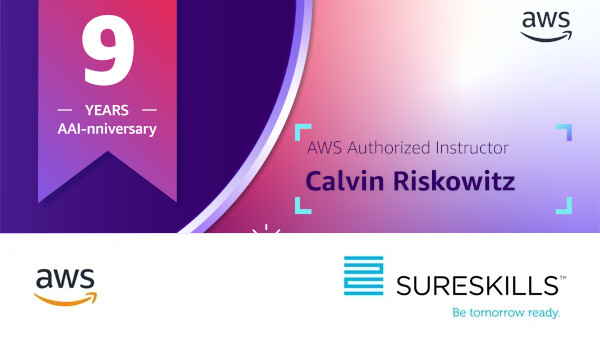AWS launches an Elastic Disaster Recovery Service
In this day and age of technological improvements in the IT industry, I am still amazed by the number of companies who continue to have (and pay large sums of money for) their own disaster recovery data centres. While I’m not promoting doing away with a disaster recovery plan, I do have to ask if there still a need for physical data centres?
The AWS ‘Well Architected Framework’ document is based on five design and implementation pillars: Operational Excellence, Security, Reliability, Performance Efficiency and finally Cost Optimization. As such it provides a consistent approach for customers and partners to evaluate their architectures and implement designs that can scale over time.
When we discuss Reliability in our AWS architecting courses, one of the best practices we focus on is the ability to automatically recover from failure. (Or, as I often explain, we should architect (or design) for failure from the ground up. Designing for failure is all well and good, but what do we do when a major outage or disaster strikes?
AWS have just announced AWS Elastic Disaster Recovery (AWS DRS) which minimizes both downtime and data loss with fast, reliable recovery of both on-premises and cloud-based applications using affordable storage, minimal compute, and point-in-time recovery. DRS enables customers to use AWS as an elastic recovery site without the need to invest in or continue to maintain an on-premises (or co-located) DR infrastructure site that generally lies idle until needed. When you have enabled this service, AWS DRS maintains a constant replication posture for your operating systems, applications, and databases. This helps businesses meet recovery point objectives (RPOs) of seconds, and RTOs of minutes, after disaster strikes. In cases of ransomware attacks, for example, DRS also allows recovery to a previous point in time.
Set up AWS Elastic Disaster Recovery on your source servers to initiate secure data replication to AWS. Your data is securely replicated to a staging area subnet in your AWS account, in the AWS Region you specify (to remain compliant with the provisions of GDPR and Data Protection). The staging area design reduces costs by using affordable storage and minimal compute resources to maintain ongoing replication.
You can also perform non-disruptive tests to confirm that the implementation is complete and fully functioning. During your normal day to day operations, you can constantly check your readiness state by monitoring replication and you can perform ad-hoc non-disruptive recovery and failback drills. If you need to recover your applications, you can launch recovery instances on AWS within minutes, using the most up-to-date server state or a previous replication point in time. Once your applications are up and running on AWS and your services are restored, you can either choose to leave them running on AWS, or you can initiate data replication back to your primary site when the issue is fully resolved and then fail back to your primary site when you’re ready.
AWS Elastic Disaster Recovery (AWS DRS) has simple, predictable, usage-based pricing. With AWS Elastic Disaster Recovery, you pay only for the servers you are actively replicating to AWS. Your costs are based on a flat per hour fee. There are no resources to manage, no upfront costs, and no minimum fee. This gives you the flexibility to easily use this recovery solution by paying on an hourly basis, rather than committing to a long-term contract or set number of servers. Pricing includes continuous data replication, test launches, recovery launches, and point-in-time recovery.
If you haven’t considered this Disaster Recovery solution – I strongly recommend you do so. You’re welcome to contact us to discuss how this solution can help you or how we can assist with the implementation of this cost effective service.
#AWS
#AWS DRS
#BeTomorrowReady
#SureSkills
#Training





